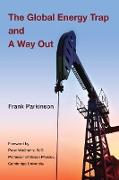- Start
- The Global Energy Trap and A Way Out
The Global Energy Trap and A Way Out
Angebote / Angebote:
This book looks at innovative engineering solutions to the problems of climate change and explores ways in which to develop clean, renewable energy sources.
It is now generally accepted that the world's climate has entered into a phase of warming with potentially disastrous consequences for the planet, but there is no agreement about how to deal with it. The "global energy trap" of the title refers to the fact that our civilization has been built on energy derived from fossil fuels and when these are exhausted, there must be a collapse of some kind. However, long before we have run them down to exhaustion we shall have pushed atmospheric pollution and global warming beyond a tipping point. In this situation there is no rational choice except to develop clean, renewable energy sources with all deliberate haste. How this can be done is the central theme of the book. Although the answer is largely one of innovative engineering, other social and economic factors must be taken into account, and the book is written for the general reader who is interested in all aspects of this problem which is becoming increasingly urgent.
Although a substantial part of the book is devoted to explaining the energy disaster which the world now faces, this is an optimistic work. The E-plus and K-gen systems together constitute a novel approach to energy generation, transformation and storage, and while biochar is the solution to a different kind of problem, all taken together constitute a three-pronged plan of action to combat global warming and fossil fuel energy depletion. Al Gore has said that there is no "silver bullet" answer to the complex problem of energy depletion and global warming, but the book is offering three silver bullets that can do the job. To determine the plausibility of this claim, one needs to begin with an understanding of what the global problem actually is and why it is described in the title as a trap. That task constitutes Part One of the book. It is actually multiple crises which interlock and are converging towards a point of catastrophe between thirty and forty years from now. Unless massive action is taken before then, we, or our children, may expect to experience global breakdown on a scale which may truly be called apocalyptic. That is a sensational term, but if it actually describes future events, there is nothing to be gained by seeking comfort in a less emotive word.
Folgt in ca. 10 Arbeitstagen




